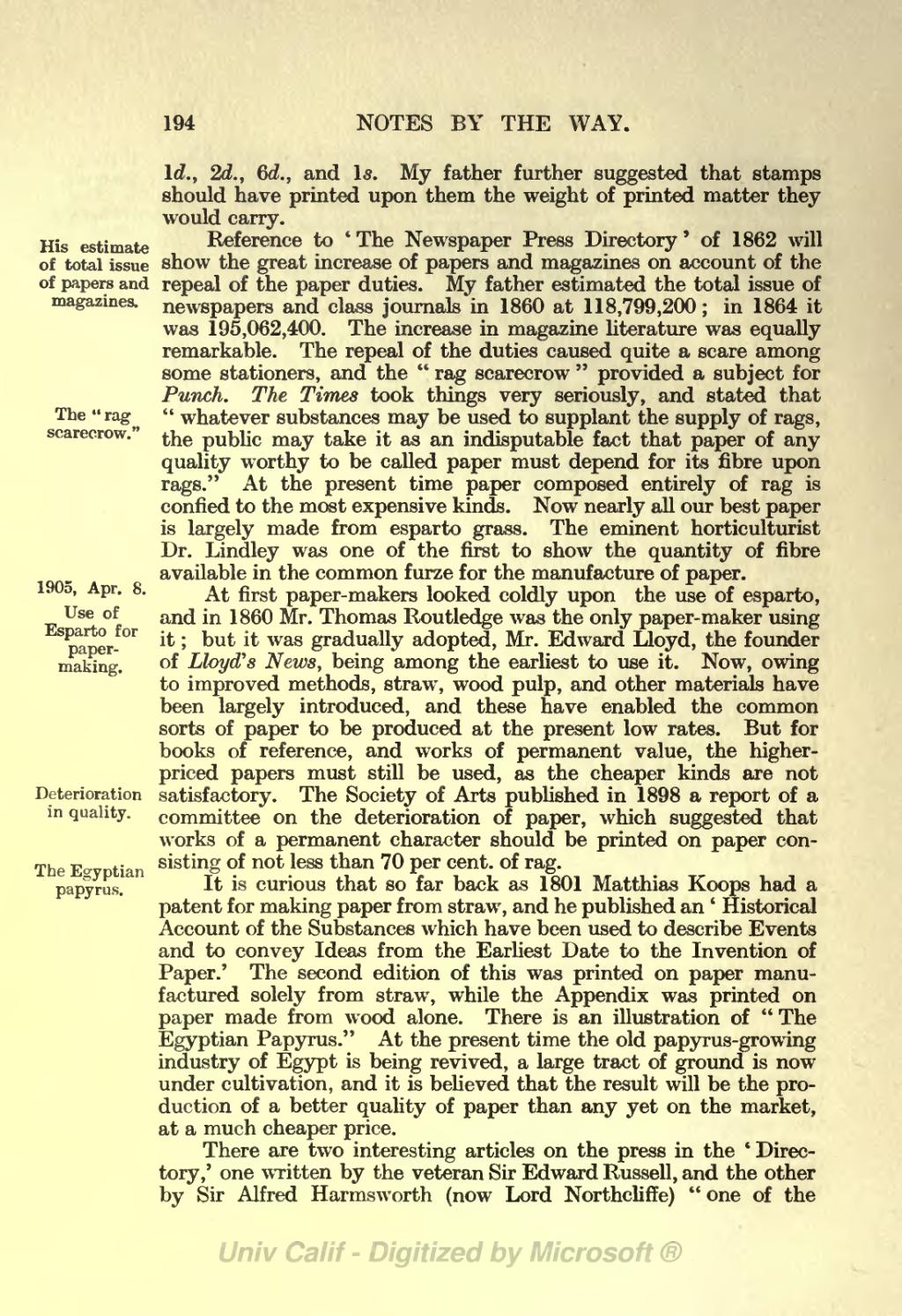194
NOTES BY THE WAY.
His estimate of total issue of papers and magazines.
The " rag scarecrow."
1905, Apr. 8.
Use of Esparto for paper- making.
Deterioration in quality.
The Egyptian papyrus.
1d., 2d., 6d., and 1s. My father further suggested that stamps should have printed upon them the weight of printed matter they would carry.
Reference to ' The Newspaper Press Directory ' of 1862 will show the great increase of papers and magazines on account of the repeal of the paper duties. My father estimated the total issue of newspapers and class journals in 1860 at 118,799,200; in 1864 it was 195,062,400. The increase in magazine literature was equally remarkable. The repeal of the duties caused quite a scare among some stationers, and the " rag scarecrow " provided a subject for Punch. The Times took things very seriously, and stated that " whatever substances may be used to supplant the supply of rags, the public may take it as an indisputable fact that paper of any quality worthy to be called paper must depend for its fibre upon rags." At the present time paper composed entirely of rag is confined to the most expensive kinds. Now nearly all our best paper is largely made from esparto grass. The eminent horticulturist Dr. Lindley was one of the first to show the quantity of fibre available in the common furze for the manufacture of paper.
At first paper-makers looked coldly upon the use of esparto, and in 1860 Mr. Thomas Routledge was the only paper-maker using it ; but it was gradually adopted, Mr. Edward Lloyd, the founder of Lloyd's News, being among the earliest to use it. Now, owing to improved methods, straw, wood pulp, and other materials have been largely introduced, and these have enabled the common sorts of paper to be produced at the present low rates. But for books of reference, and works of permanent value, the higher- priced papers must still be used, as the cheaper kinds are not satisfactory. The Society of Arts published in 1898 a report of a committee on the deterioration of paper, which suggested that works of a permanent character should be printed on paper con- sisting of not less than 70 per cent, of rag.
It is curious that so far back as 1801 Matthias Koops had a patent for making paper from straw, and he published an ' Historical Account of the Substances which have been used to describe Events and to convey Ideas from the Earliest Date to the Invention of Paper.' The second edition of this was printed on paper manu- factured solely from straw, while the Appendix was printed on paper made from wood alone. There is an illustration of " The Egyptian Papyrus." At the present time the old papyrus-growing industry of Egypt is being revived, a large tract of ground is now under cultivation, and it is believed that the result will be the pro- duction of a better quality of paper than any yet on the market, at a much cheaper price.
There are two interesting articles on the press in the ' Direc- tory,' one written by the veteran Sir Edward Russell, and the other by Sir Alfred Harmsworth (now Lord Northcliffe) " one of the
